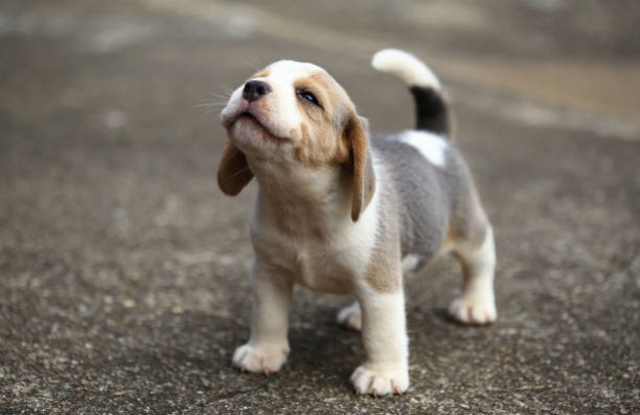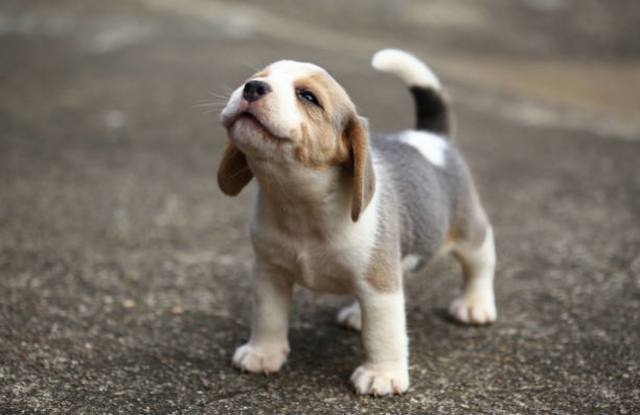Beagles are among the most popular and easily recognizable dogs worldwide, but did you know they have a miniature version called the Pocket Beagle?
These pups also share some of the well-known breed characteristics. They’re fun-loving, super affectionate, and energetic fluffballs that love to roam around and snuggle with their owner every chance they get. Let’s learn more about them:
- Origins and History
- What Do They Look Like?
- Temperament — The Same as Regular Beagles?
- Pocket Beagles Are Prone to More Health Issues
- Nutrition — They Aren’t Called “Chow Hounds” For Nothing
- Pocket Beagles Are Low Maintenance
- Where Can You Get a Pocket Beagle?
Meet the Smaller Beagle
The Pocket Beagle is relatively small, making it even more adorable. These adorable fluffballs can reach heights of 7–12 inches.
Their small demeanor makes them easy to carry around as they can fit in bags and dog carriers. In contrast, a full-size Pocket Beagle can weigh up to 15 pounds.
Beagles Were First Bred in the 11th Century
They’re descendants of the now-extinct Talbot hound, brought to England by William the Conqueror during the Norman Conquests in 1066. These dogs rose to stardom during this period and kept it for centuries.
Although they were first bred in the 11th century, their popularity grew during the beginning of the 12th and 13th centuries. They were known as Glove Beagles as they were so tiny you could hold them in a gloved hand.
Pocket Beagles Were Discovered in the 15th Century
The Beagle name was first mentioned in 1465 in the works of literary giants like Geoffrey Chaucer and William Shakespeare. For example, you can find it in this line from the bard’s Twelfth Night: “She’s a Beagle, true-bred, and one that adores me.”
There are records that the Miniature Beagle was among the highest ranks of old English society. Her royal highness Queen Elizabeth was an avid dog lover and had a soft spot for these adorable fluffballs.
Queen Elizabeth Had Pocket Beagles
One of the most popular dogs of the 15th century was the tiny Queen Elizabeth Pocket Beagle. The Queen had an entire pack of these loveable pups. The pets accompanied her in her saddle pocket.
Queen Elizabeth had another name for her loving dogs. She’d call them “singing dogs” as they popped on the table and entertained some of her guests.
They Aren’t Recognized as an Official Breed
You should know that the AKC and the National Beagle Club of America don’t recognize the former as an official breed. Because of its small height and weight, the mini version falls below the standard dog size.
Although the mini Beagle doesn’t get much recognition in the dog world, it doesn’t mean it deserves less love or affection.
What Do They Look Like?
The short-legged Beagle is equally, if not even more adorable and squishable than the standard one. It’s a small-sized dog that grows no longer than 12 inches. Its fur is soft, dense, and comes in various colors.
Your newborn Beagle puppy can have a tricolor or dual-colored coat in brown, white, black, red, tan, lemon, or bluetick. Some more unique Beagles have spotted, dapple or merle, or single-color coats. If your pup is rare, it may even be an albino.
They Are Half the Size of a Regular Beagle
No matter their size, you simply can’t resist that gorgeous Beagle face. Plus, these astonishing pups are among the friendliest dogs.
But how big do Pocket Beagles get? The standard is generally between 7 and 12 inches. They’re approximately half the size of a regular Beagle. They’re the perfect companions that fit almost any means of transportation.
Their Rain-Resistant Coats Come In One Pattern
Their rain-proof, thick, and double coat can be tricolor, black and tan, red and white, lemon and white, or orange and white.
The fluffy teacup Beagle has a coat that sheds during the whole year. That intensifies in spring, so be prepared for some heavy hair cleaning around your house.
Another fun fact is that the Pocket Beagle’s tail is always white. This makes it easy for hunters to see their dogs in the forest during a hunt. So if you notice a wagging white tail, it probably belongs to a Pocket or standard Beagle.
Temperament — The Same As Regular Beagles?
The mini Beagle is among the sweetest and most loving dogs. These pups have fun and energetic personalities and are incredibly gentle to children and other dogs.
Like the standard Beagle, they can show some signs of stubbornness and disobedience. That’s why it’s crucial to provide proper obedience and regular training from an early age if you want to avoid unruly behavior.

Pocket Beagles Love Everyone & Everything
The main objective of these dogs is to give as much love as it possibly can to anyone dear and deserving. Whether you have a pup or a full-grown Pocket Beagle, it’ll love to roam around and enjoy your company.
High-Energy Dogs
These pups enjoy being in the open, chasing, playing fetch, gathering rocks, and anything that involves an energetic outburst of energy and affection. Looking at their outgoing personality, you might even think they’re half Golden Retrievers.
They Love To Hunt & Chase
Don’t let their small appearance fool you. Like other popular scent hound dog breeds, the Pocket Beagle relies on its nose. They love to hunt and chase game out in the open. You’re in for long hunting sessions if you get them as pets.
They Are Independent Yet Loyal
The Toy Beagle enjoys its independence and solitude. Also, it’s one of the most loyal breeds. These pups can form an instant connection with you. Due to their affection towards children, they’re among the best dog breeds for a family with kids.
They Are “Singing Beagles”
The term “singing Beagles” was common for the Queen Elizabeth Pocket Beagle. She proudly put her pet on display for esteemed guests. She considered the dogs a form of high-level entertainment and left them on the table as her guests enjoyed their shenanigans and were thrilled by them.
They Are Brilliant
Besides being incredibly sweet, gentle, and full of love, the teacup Pocket Beagle is brilliant and curious. If you decide to get one, know that it requires a lot of attention and fun activities.
These pups can get bored quickly. When they do, they throw tantrums and misbehave. They also love to dig and create a mess when bored, so you should keep them entertained and challenge them daily.
Pocket Beagles Are Prone to More Health Issues
Are Pocket Beagles healthy? Due to their small size, they’re more susceptible to health problems than standard Beagles. That’s the case with most tiny dog breeds. Another common issue for underlying health problems is poor breeding practices.
Lifespan
With proper exercise and a healthy diet, your favorite fluffy teacup Beagle will live a long and happy life by your side. The breed’s average lifespan is the same as the standard Beagle — 12 to 15 years.
Always provide regular health checkups and monitor your dog’s diet, appearance, and overall well-being. These pups love to roam around and wander, so it’s best to microchip them and put on their ID collar at all times.
Common Health Issues
If you decide to buy a Pocket Beagle, ensure the breeder shows you a substantial amount of health certificates. These loving balls of joy are prone to health issues, so you should check them from day one.
Beagles suffer eye, heart, and hip conditions. They’re also prone to obesity, so measure their daily caloric intake and avoid going over it. If you’re worried that your dog eats too fast, you can test different slow feeder bowl styles to solve the issue.
Some of the most common health conditions Pocket Beagles face include:
- Heart & eye problems
- Epilepsy
- Dwarfism
- Hypothyroidism
- Hip dysplasia
Nutrition — They Aren’t Called “Chow Hounds” For Nothing
Small Beagles have high energy levels and require a lot of high-quality dog food after a long day of running around to replenish it. The short-legged Beagle is also famous as a “chow hound,” meaning it doesn’t know when to stop eating. So if you provide free access to food, that will only cause problems.
Our advice is that you go for high-quality dog food low in calories and high in protein. The food amount depends on your dog’s size, overall health, and activity level. An occasional treat is fine if you don’t give them too much.
Pocket Beagles Are Low Maintenance
Generally, this breed is easy to take care of. It’s brilliant, affectionate, and great with kids. But these pups require daily exercise to stay active and healthy. Also, be careful with their diet. You wouldn’t want your dog to suffer obesity.
Where Can You Get a Pocket Beagle?
If you’ve decided this is the right breed for you, you should check for Pocket Beagles for adoption. Fostering or adopting a puppy is always better than buying one, so check the rescue shelters near you first.
The usual price ranges from $500 to $1,500, depending on the dog’s appearance and heritage.
Find a Good Breeder
If you decide on this breed as your pet, always do your research and find Pocket Beagle breeders with a good reputation. They should be able to provide the detailed history of your future pet. You can also take a step further and get some accurate DNA tests for dogs if you want to double-check the ancestry.
Rescuing Your New Friend
We always recommend adoption and not shopping. That way, you’re taking in a neglected dog with nowhere else to go. Check your local or national Pocket Beagle rescue centers. You never know where your future best friend might be waiting for you.
Here’s a list of shelters you can check out:
- Beagle Freedom Project
- SOS Beagle Rescue
- Forever Home Beagle Rescue
- Colorado Beagle Rescue
- Triangle Beagle Rescue
The Final Verdict
If you’re looking for a smaller Beagle and a loyal, loving, and energetic dog, the Pocket Beagle is the right choice. These small Beagles are fairly easy to train and don’t require much grooming. It’s the ideal family dog that will get along with everyone. Plus, they come with the Queen’s seal of approval.


